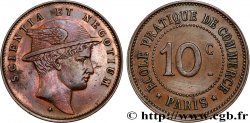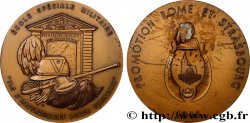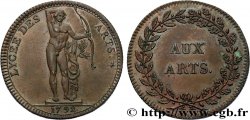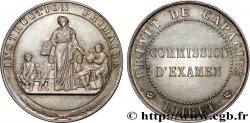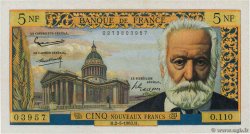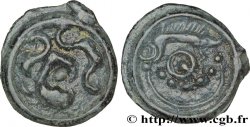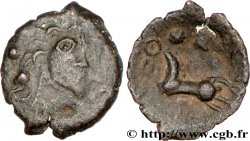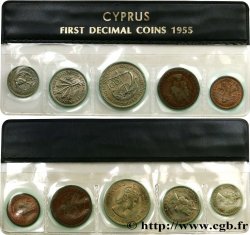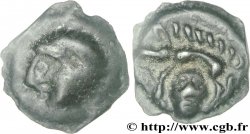E-auction 142-82243 - fjt_235549 - Education and schools Lycée républicain de Paris n.d.
Sie müssen angeschlossen sein und von cgb.fr genehmigt werden, um in einer E-Auktion teilzunehmen.Melden Sie sich an, um zu wetten..Die Kontobestätigungen sind innerhalb von 48 Stunden nach Ihrer Anmeldung gemacht.Warten Sie nicht bis die letzten zwei Tage vor dem Abschluss eines Verkaufs, um Ihre Registrierung abzuschließen. Klickend "BIETEN" verpflichten Sie sich vertraglich, diesen Artikel zu kaufen und Sie nehmen ohne Reserve die allgemeinen Verkaufsbedingungen für den e-auctions zu cgb.fr an.
Der Verkauf wird an der Zeit auf der Übersichtsseite angezeigt geschlossen werden. Angebote, die nach der Schließung Zeit empfangen sind, werden nicht gültig.
Bitte beachten Sie, dass die Fristen für die Einreichung Ihres Angebots auf unsere Server können variieren und es kann zur Ablehnung Ihres Angebots entstehen, wenn es in den letzten Sekunden des Verkaufs gesendet wird. Die Angebote sollen mit ganzer Zahl ausgeführt sein, Sie können Kommas oder des Punktes in Ihrem Angebot nicht erfassen. Bei Fragen klicken Sie hier, um einen Blick auf die FAQ E-Auktionen.
KEINE ANSCHAFFUNGSKOSTEN FÜR DIE KÄUFER.
KEINE ANSCHAFFUNGSKOSTEN FÜR DIE KÄUFER.
| Schätzung : | 120 € |
| Preis : | 25 € |
| Höchstgebot : | 25 € |
| Verkaufsende : | 04 Januar 2016 19:12:00 |
| Bieter : | 5 Bieter |
Type : Lycée républicain de Paris
Datum: n.d.
Metall : Kupfer
Durchmesser : 30 mm
Stempelstellung : 12 h.
Gewicht : 12,30 g.
Rand lisse
Seltenheitsgrad : R2
Vorderseite
Titulatur der Vorderseite LYCEE REPUBLICAIN DE PARIS.
Beschreibung Vorderseite dans un grènetis.
Rückseite
Titulatur der Rückseite CONSOCIARE AMAT.
Beschreibung Rückseite Pallas casquée avec cimier, debout à gauche, tenant un niveau et une lance.
Übersetzung der Rückseite Elle aime à unir.
Kommentare
Hennin accorde, page 480, plusieurs pages de commentaires à ce jeton mais ne signale pas l’usage récurrent du type CONSOCIARE AMAT dans les institutions du nouveau régime, où nous voyons une inspiration maçonnique directe.
Concernant cet exemplaire, la qualité de frappe, de métal, de coin, de polissage du coin et de conservation pose problème. En effet, il ne semble pas tardif car le coin est en parfait état et à fleur mais la qualité technique semble impensable pour la période.
Pourtant, le traitement de la tranche pose le problème inverse : alors que les jetons à tranche lisse à partir des années 1840 (sans oublier qu’ils portent poinçon depuis 1831, notre exemplaire n’a pas de poinçon) sont d’une qualité comparable, leur tranche est parfaitement lisse alors que celle de notre exemplaire montrent encore des traces de traitement artisanal à un examen minutieux. Que penser ? Frappe de prestige initiale ? Mais alors pourquoi du cuivre ? Nous espérons qu’un autre exemplaire pourra nous éclairer sur la sate de frappe de notre exemplaire.
La légende de revers est extraite des Odes d'Horace (4.II, od.3, v.10). Ce jeton, qui reprend, en lui supprimant son exergue et sa date, un revers de la série des bâtiments du Roi, a été utilisé comme "jeton banal" par des loges maçonniques trop pauvres pour faire frapper leurs propres jetons. Il est aussi attribué sans preuve aux architectes.
Hennin devotes, on page 480, several pages of comments to this token but does not report the recurring use of the CONSOCIARE AMAT type in the institutions of the new regime, where we see a direct Masonic inspiration..
Concerning this example, the quality of the strike, metal, die, die polishing and conservation poses problems.. In fact, it does not seem late because the corner is in perfect condition and flush but the technical quality seems unthinkable for the period.
However, the treatment of the edge poses the opposite problem: while the smooth-edged tokens from the 1840s onwards (not forgetting that they have been hallmarked since 1831, our example has no hallmark) are of comparable quality, their edge is perfectly smooth while that of our example still shows traces of artisanal treatment upon close examination.. What should we think? Initial prestige strike? But then why copper? We hope that another example can shed light on the date of strike of our example..
The reverse legend is taken from the Odes of Horace (4. II, od. 3, v. 10). This token, which, without its exergue and date, is a reverse of the series of the King's buildings, was used as a \\\"banal token\\\" by Masonic lodges too poor to have their own tokens struck.. It is also attributed without proof to architects
Concernant cet exemplaire, la qualité de frappe, de métal, de coin, de polissage du coin et de conservation pose problème. En effet, il ne semble pas tardif car le coin est en parfait état et à fleur mais la qualité technique semble impensable pour la période.
Pourtant, le traitement de la tranche pose le problème inverse : alors que les jetons à tranche lisse à partir des années 1840 (sans oublier qu’ils portent poinçon depuis 1831, notre exemplaire n’a pas de poinçon) sont d’une qualité comparable, leur tranche est parfaitement lisse alors que celle de notre exemplaire montrent encore des traces de traitement artisanal à un examen minutieux. Que penser ? Frappe de prestige initiale ? Mais alors pourquoi du cuivre ? Nous espérons qu’un autre exemplaire pourra nous éclairer sur la sate de frappe de notre exemplaire.
La légende de revers est extraite des Odes d'Horace (4.II, od.3, v.10). Ce jeton, qui reprend, en lui supprimant son exergue et sa date, un revers de la série des bâtiments du Roi, a été utilisé comme "jeton banal" par des loges maçonniques trop pauvres pour faire frapper leurs propres jetons. Il est aussi attribué sans preuve aux architectes.
Hennin devotes, on page 480, several pages of comments to this token but does not report the recurring use of the CONSOCIARE AMAT type in the institutions of the new regime, where we see a direct Masonic inspiration..
Concerning this example, the quality of the strike, metal, die, die polishing and conservation poses problems.. In fact, it does not seem late because the corner is in perfect condition and flush but the technical quality seems unthinkable for the period.
However, the treatment of the edge poses the opposite problem: while the smooth-edged tokens from the 1840s onwards (not forgetting that they have been hallmarked since 1831, our example has no hallmark) are of comparable quality, their edge is perfectly smooth while that of our example still shows traces of artisanal treatment upon close examination.. What should we think? Initial prestige strike? But then why copper? We hope that another example can shed light on the date of strike of our example..
The reverse legend is taken from the Odes of Horace (4. II, od. 3, v. 10). This token, which, without its exergue and date, is a reverse of the series of the King's buildings, was used as a \\\"banal token\\\" by Masonic lodges too poor to have their own tokens struck.. It is also attributed without proof to architects








 Berichten über einen Fehler
Berichten über einen Fehler Die Seite drucken
Die Seite drucken Teilen meiner Auswahl
Teilen meiner Auswahl Stellen Sie eine Frage
Stellen Sie eine Frage Einlieferung/Verkauf
Einlieferung/Verkauf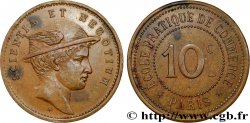
 Details
Details